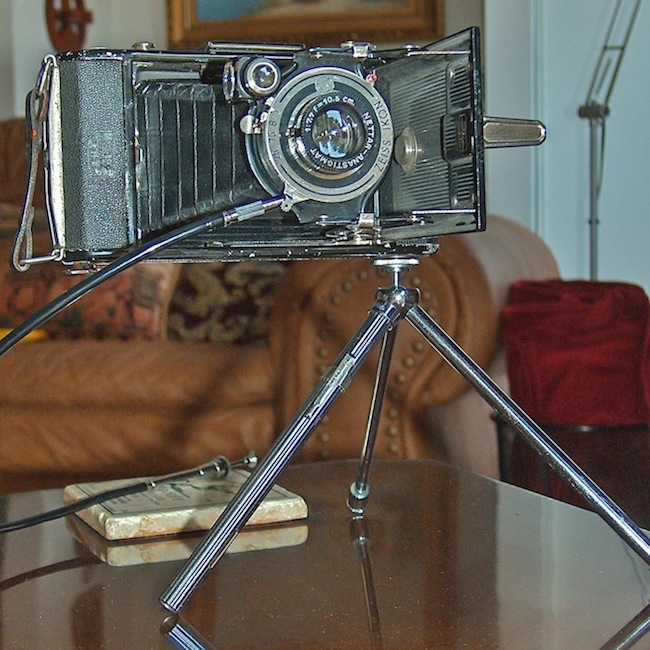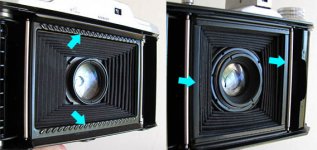I use a pre-WWII Zeiss Ikon Nettar 510/2. The main limiting factor for me is shutter speeds: 1/25 & 1/75. In spite of this, I most often shoot hand-held. I am deliberate about concentrating on holding the camera steady: hold breath; press shutter release slowly and steadily, use a cable release for landscape shots (the shutter release is on the front plate beside the lens); use the self timer. I find that a full size tripod negates the size and weight advantage of the ZI folder, and most small, pocket tripods are not sturdy enough for the camera. I sometimes use a pen sized Minox tripod, which screws together ans so is sturdy enough for me. Below is a picture.




